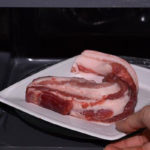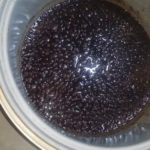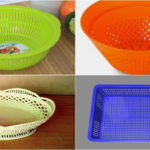Paper cups are ubiquitous, from street-side stalls to upscale cafes. They are used as beverage containers and serve as a valuable advertising channel for businesses, with promotional images and brand logos printed on their surfaces.
However, not everyone is aware of the pros and cons of single-use paper cups and how to use them properly. Let’s explore these interesting facts together right below.
1 What are single-use paper cups made of?
 Paper cups are made from pure PO paper and coated with a thin layer of PE
Paper cups are made from pure PO paper and coated with a thin layer of PE
Most single-use paper cups are made from pure PO paper and coated with a thin layer of PE (thermoplastic resin) to ensure safety for users, even with hot or cold drinks. PO paper is a type of pure, health-safe, and aesthetically pleasing paper used in packaging, pharmaceuticals, and paper cups.
2 Paper Cup Designs
 Various paper cup designs
Various paper cup designs
Nowadays, there is a wide range of paper cup designs available in the market, allowing customers to choose according to their needs.
– Plain white paper cups: These cups use the original color of the paper and have no patterns or designs on them.
– Single-color cups: These cups feature only one color to create a focal point and attract attention.
– Pre-printed cups: These cups are printed with multiple attractive and eye-catching details.
– Custom-printed cups: You can order these cups with your desired patterns, styles, and shapes.
3 Advantages and Disadvantages of Single-Use Paper Cups
Advantages
 Single-use paper cups are widely used
Single-use paper cups are widely used
Single-use paper cups are prevalent in many companies, eateries, hospitals, and schools because they are portable and save time on cleaning. Paper cups are compact and stackable, so they don’t require much space.
Moreover, the variety of cup designs are particularly appealing to young people and are just as convenient as plastic cups. In addition, the cups are made from 100% pure paper pulp and are easily biodegradable in a short time.
For these reasons, single-use paper cups are also favored by businesses for commercial purposes, as they can print their logos and messages on the cups to help improve brand recall.
Disadvantages
 Paper cups are prone to moisture and deformation
Paper cups are prone to moisture and deformation
No product is perfect, and paper cups are no exception. They have some disadvantages that should be noted when using and storing them. Paper cups can easily become damp and deform if placed in a humid environment. Additionally, the cost of many paper cups is higher than that of other materials, so they cannot completely replace plastic cups.
Overall, when comparing the disadvantages to the advantages, the drawbacks of paper cups are negligible, and they have gained the trust of the majority of consumers, especially those who favor green consumption.
4 How to Properly Use Single-Use Paper Cups
 How to properly use single-use paper cups
How to properly use single-use paper cups
Some people may be tempted to reuse single-use paper cups to save money, but this is not recommended. Reusing paper cups can cause residues to transfer to food and drinks and subsequently enter the body, potentially affecting health. Additionally, single-use paper cups can become damp and moldy if left for too long.
Furthermore, paper cups are not suitable for hot drinks above 70 degrees Celsius as the coating may leach into the beverage and pose health risks. It is also important to rinse the cup once before use.
Moreover, paper cups are prone to counterfeiting and may be of inferior quality, which can affect the user’s health. Therefore, it is essential to purchase paper cups from reputable sources.
5 How to Store Paper Cups
 How to store paper cups
How to store paper cups
Here are some tips to keep in mind when storing paper cups to ensure safety:
– Keep them in a dry, cool, and well-ventilated place, preferably on a shelf, to maintain hygiene and avoid dust. Alternatively, leave them in the bag until use.
– Do not overfill the cups as they are not as sturdy as other materials and may be difficult to hold and drink from.
Don’t miss out on any information about paper cups to ensure your health and the well-being of those around you. Be sure to share these fascinating facts with your friends too!
Important Guidelines to Follow When Utilizing a Washing Machine’s Dryer Function
If you’re looking for ways to maximize the efficiency of your washing machine and dryer, we’ve got just the advice for you! Follow a few simple guidelines and you can increase the performance of your machines, save time and energy, and reduce noise levels. To get started, here’s a look at the best practices for using the dryer function of your washing machine!
Defrosting Meat: Cold Water or Microwave?
Defrosting meat is a delicate process, and while the traditional method of transferring from the freezer to the fridge and then to room temperature is effective, it can be time-consuming. So, what’s the best way to quickly and safely defrost meat? Should you use a microwave or cold water? Let’s explore the best options to ensure your meat is thawed efficiently and securely.
“The Great Bean Debate: Exploring the Pros and Cons of Cooking Black Bean Dessert in a Rice Cooker and Pressure Cooker”
Join us as we delve into the pros and cons of cooking black bean dessert porridge using a rice cooker and a pressure cooker. This insightful comparison will empower you to make an informed decision on which tool best suits your needs.
Should You Choose Stainless Steel or Plastic Baskets for Daily Use?
Choosing the right kitchen products for your family’s health is essential, and one crucial aspect is selecting the right type of basket or colander. At Bach Hoa Xanh, we understand your concerns, and we’re here to help. We’ll guide you through the process of choosing the perfect kitchen tools to ensure your family’s well-being. Stay tuned as we explore the world of healthy kitchen essentials together!





































